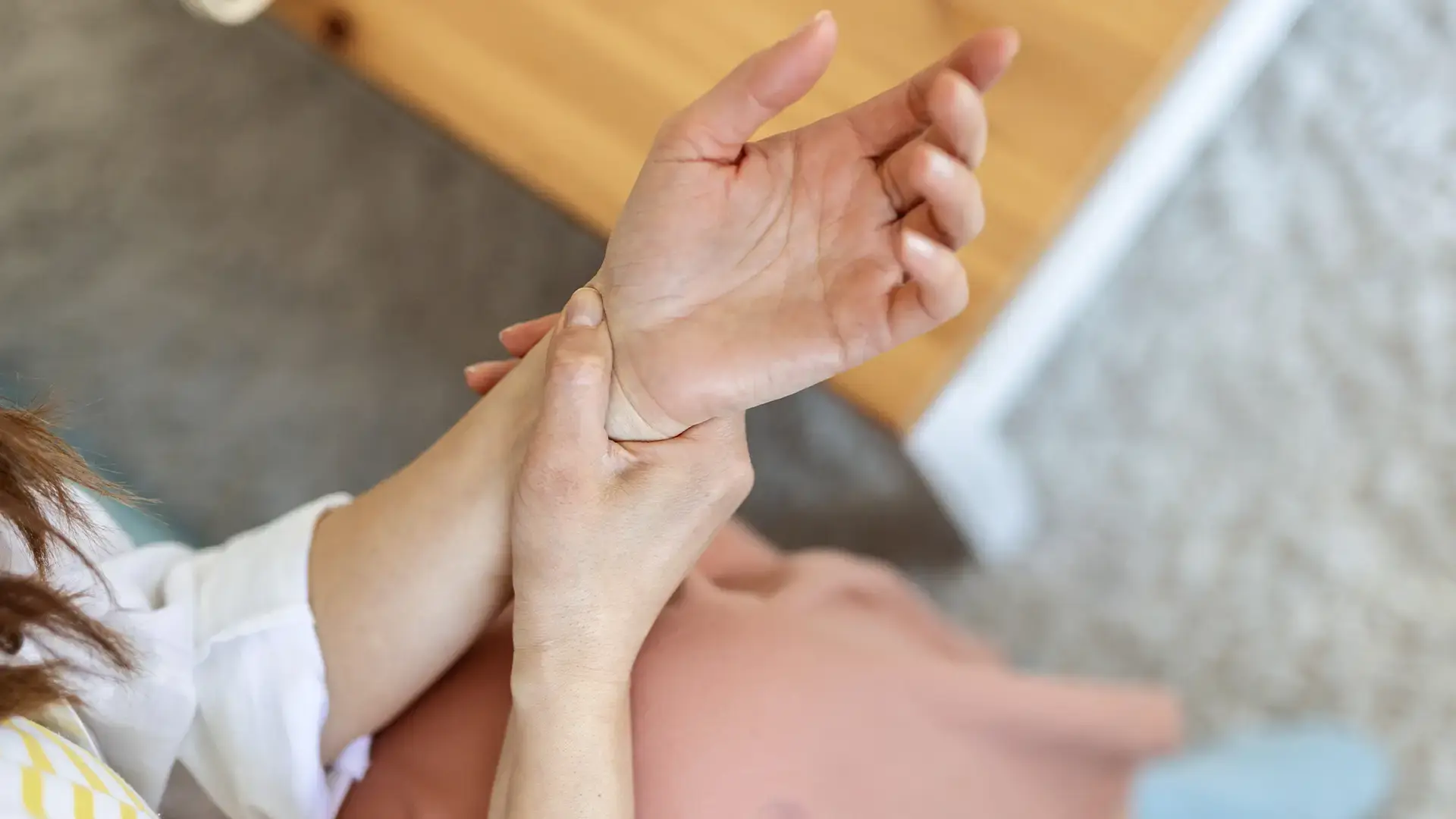Platelet-Rich Plasma Therapy in Treatment of Discogenic Low Back Pain & Acute Herniated Nucleus Pulposus with Radiculopathy

Understanding Discogenic Low Back Pain
Discogenic low back pain (DLBP) is the second most common symptomatic reason for healthcare visits in the United States and represents one of the leading causes of disability worldwide. The condition has a peak incidence in the 50-55 age group, although the highest prevalence and disability burden are observed in the 80-85 demographic. DLBP typically presents as “band-like” discomfort exacerbated by sitting, bending forward, coughing, sneezing, or bearing down.
DLBP is notoriously challenging to treat, often responding incompletely to conventional treatments. Many patients with DLBP improve at least partially within 2-6 months with conservative management, although approximately 20% may experience recurrence of symptoms. Conservative management should always be emphasized for both newly diagnosed and recurrent DLBP. First-line options include physical therapy and exercise regimens like Pilates as well as medications such as NSAIDs and muscle relaxants for managing pain and inflammation.
For patients with persistent symptoms from DLBP despite conservative management, various interventional options exist:
- Intradiscal Steroid Injections: According to the North American Spine Society (NASS) and International Pain Society for Interventional Spine guidelines, evidence for long-term functional outcomes is mixed. Injections may provide short-term relief, particularly in patients with inflammatory MRI changes, but have limited long-term efficacy.
- Riegger et al.’s meta-analysis found significant short-term (<3 months) pain reduction and improved function, but no considerable long-term (≥6 months) benefits.
- Butter and Cao et al found injections to be more effective in patients with inflammatory end-plate changes (Modic Type 1).
- Epidural Steroid Injections: Limited efficacy and utility in purely discogenic pain. Better outcomes when inflammatory components predominate, or for radicular symptoms.
- Surgical Interventions: Include spinal fusion to eliminate motion between spinal segments; artificial disc replacement – a motion-sparing alternative; and discectomy to remove damaged disc tissue, primarily indicated for radiculopathy.
Platelet-Rich Plasma for Discogenic Low Back Pain
Recent research has generated considerable interest in platelet-rich plasma (PRP) as a regenerative therapy for DLBP. PRP contains high concentrations of growth factors that promote tissue healing through:
- Stimulation of cell proliferation and migration
- Enhanced synthesis of extracellular matrix proteins and collagen
- Modulation of inflammatory processes
There is growing evidence for PRP in treating various musculoskeletal conditions. Because of this, using PRP and other regenerative therapies for spinal conditions is an exciting new direction for interventional spine and pain medicine.
Evidence from Recent Studies
A clinical trial by Zhang et al. (2023) examined intradiscal PRP injections in patients with refractory DLBP. Inclusion criteria included: pain persisting ≥6 months; failure of conservative treatment; intervertebral disc height ≥50%; disc protrusion <5mm; concordant pain on discography with grade 3-4 annular fissure. Thirty-one patients received 2ml of autologous leukocyte-poor PRP injected into each affected disc.
Results were promising, with 71% of patients (22/31) achieving statistically significant improvements in both current and best/worst pain (VAS and NRS) and function (ODI plus SF-36) at 48 weeks post-injection. Notably, patients receiving injections at multiple levels demonstrated less favorable outcomes, potentially indicating how more advanced degenerative disease may influence treatment response rate. Adverse events were minimal, with only one patient (3%) requiring surgical intervention for intervertebral discitis, associated with repeated needle punctures of the disc.
A single-arm meta-analysis by Peng et al evaluated intradiscal PRP for DLBP across six studies (three RCTs and three prospective single-arm trials). Their analysis demonstrated significant pain reduction and functional improvement at 1, 2, and 6 months post-treatment, with no significant adverse reactions reported.
Another multicenter prospective, crossover, RCT by Navani et al. compared PRP and bone marrow concentrate (BMC) to placebo, finding both significantly improved pain and function with no adverse effects reported.
The American Society of Pain and Neuroscience published evidence-based clinical guidelines reviewing interventional treatments, including PRP for LBP. The guidelines included high-quality RCTs such as Tuakli-Wosornu et al., which demonstrated significant improvements in pain and function maintained for at least one year following PRP treatment.
Limitations in Current Evidence
A systematic review by Schneider et al. in the NASS Journal assessed the effectiveness of intradiscal biologic treatments, including PRP for DLBP. While many studies reported positive outcomes, the review found the overall quality of the evidence base needs continued improvement due to factors such as heterogeneity of study design and low sample sizes.
There are some inherent challenges with designing and implementing high-quality studies in the field of regenerative medicine. Still, the pace of research regarding PRP for DLBP continues to advance and strengthen the current evidence base.
PRP for Herniated Nucleus Pulposus (HNP) and Radiculopathy
Understanding HNP and Radiculopathy
HNP with radiculopathy is a common cause of low back and leg pain. HNP can happen at any age, but it should be a strong consideration for younger patients. This occurs when the nucleus, the disc’s inner core, protrudes through a tear in the annulus, the outer ring of the disc, compressing or irritating the spinal nerve root, causing radiculopathy. This condition often occurs after heavy lifting or twisting movements that increase intradiscal pressure. Patients typically present with a sudden onset of low back or gluteal pain, radiating down the leg in a nerve distribution, which may be accompanied by numbness, tingling, and weakness in the affected limb.
Most patients with acute HNP experience significant symptom improvement within three months with conservative management, including physical therapy, exercise, and medications. For patients who do not respond to conservative treatment or if significant or worsening neurologic deficits are present on examination, surgical intervention is considered.
For patients who have failed conservative management but are not surgical candidates or prefer to avoid surgery, epidural steroid injections are a standard and effective procedure for treating acute pain and helping patients participate in exercise therapy. Recent research, however, has found PRP epidural injections to be a more promising alternative for long-term relief of pain from HNP and radiculopathy.
Evidence from Recent Studies
Wongjarupong et al. conducted an RTC comparing PRP to steroid (triamcinolone) for single-level lumbar HNP. Their findings demonstrated patients treated with PRP had significant reductions in leg pain (VAS) from baseline by 6.2 points at 6 weeks, 5.8 points at 12 weeks, and 5.5 points at 24 weeks. Functional scores (ODI) also improved by 22% at 24 weeks, demonstrating superior results to triamcinolone.
A meta-analysis by Muthu et al. analyzed the efficacy and safety of PRP as an epidural injectate compared to steroids for radiculopathy due to HNP. The analysis concluded that PRP offered comparable pain relief, functional improvement, and overall health improvement to epidural steroid injections. The weighted mean difference for VAS was 0.09 and for ODI was 0.72, indicating similar outcomes between PRP and steroid groups. Notably, the safety profile of PRP was also comparable or better than that of steroids.
Clinical Implications for PRP in DLBP and HNP with Radiculopathy
Overall, PRP injections are effective for patients with DLBP and HNP with radiculopathy. This is especially true for those who receive partial benefit from corticosteroid injections and/or for those who want to avoid repeated steroid exposure that could lead to elevated blood glucose, hypertension, and adverse effects on bone density.
PRP is therefore becoming an increasingly important component of the multimodal approach for managing spine pain, particularly as an intermediate option between failed conservative management and more invasive surgical interventions.
For patients interested in PRP therapy, we invite you to schedule a consultation with the interventional spine experts at Desert Spine and Sports Physicians today.
References
- Peng B, Xu B, Wu W, et al. Efficacy of Intradiscal Injection of Platelet-Rich Plasma in the Treatment of Discogenic Low Back Pain: A Single-Arm Meta-Analysis. Medicine. 2023;102(10):e33112.
- Sayed D, Grider J, Strand N, et al. The American Society of Pain and Neuroscience (ASPN) Evidence-Based Clinical Guideline of Interventional Treatments for Low Back Pain. Journal of Pain Research. 2022;15:3729-3832.
- Schneider BJ, Hunt C, Conger A, et al. The Effectiveness of Intradiscal Biologic Treatments for Discogenic Low Back Pain: A Systematic Review. The Spine Journal. 2022;22(2):226-237.
- Navani A, Ambach M, Calodney A, et al. The Safety and Effectiveness of Orthobiologic Injections for Discogenic Chronic Low Back Pain: A Multicenter Prospective, Crossover, Randomized Controlled Trial With 12 Months Follow-Up. Pain Physician. 2024;27(1):E65-E77.
- Zhang L, et al. Clinical efficacy of intradiscal platelet-rich plasma injection for discogenic low back pain: prospective study. Journal of Pain Research. 2023.
- Wongjarupong A, Pairuchvej S, Laohapornsvan P, et al. “Platelet-Rich Plasma” Epidural Injection an Emerging Strategy in Lumbar Disc Herniation: A Randomized Controlled Trial. BMC Musculoskeletal Disorders. 2023;24(1):335.
- Muthu S, Viswanathan VK, Gangadaran P. Is Platelet-Rich Plasma Better Than Steroids as Epidural Drug of Choice in Lumbar Disc Disease With Radiculopathy? Meta-Analysis of Randomized Controlled Trials. Experimental Biology and Medicine (Maywood, N.J.). 2025;250:10390.
- Deyo RA, Mirza SK. Herniated Lumbar Intervertebral Disk. The New England Journal of Medicine. 2016;374(18):1763-72.
- Ropper AH, Zafonte RD. Sciatica. The New England Journal of Medicine. 2015;372(13):1240-8.
- Riegger M, Le H, van Kuijk SMJ, et al. Intradiscal Glucocorticoid Injection in Discogenic Back Pain and Influence on Modic Changes: A Systematic Review and Meta-Analysis of RCTs. Pain Physician. 2023;26(5):E449-E465.
- Buttermann GR. The Effect of Spinal Steroid Injections for Degenerative Disc Disease. The Spine Journal. 2004;4(5):495-505.
- Cao P, Jiang L, Zhuang C, et al. Intradiscal Injection Therapy for Degenerative Chronic Discogenic Low Back Pain With End Plate Modic Changes. The Spine Journal. 2011;11(2):100-6.
- DePalma MJ, Ketchum JM, Saullo T. What Is the Source of Chronic Low Back Pain and Does Age Play a Role? Pain Medicine. 2011;12(2):224-33.
- Verrills P, Nowesenitz G, Barnard A. Prevalence and Characteristics of Discogenic Pain in Tertiary Practice: 223 Consecutive Cases Utilizing Lumbar Discography. Pain Medicine. 2015;16(8):1490-9.
- Manchikanti L, Soin A, Benyamin RM, et al. An Update of the Systematic Appraisal of the Accuracy and Utility of Discography in Chronic Spinal Pain. Pain Physician. 2018;21(2):91-110.
- Abel F, Altorfer FCS, Rohatgi V, Gibbs W, Chazen JL. Imaging of Discogenic and Vertebrogenic Pain. Radiologic Clinics of North America. 2024;62(2):217-228.




